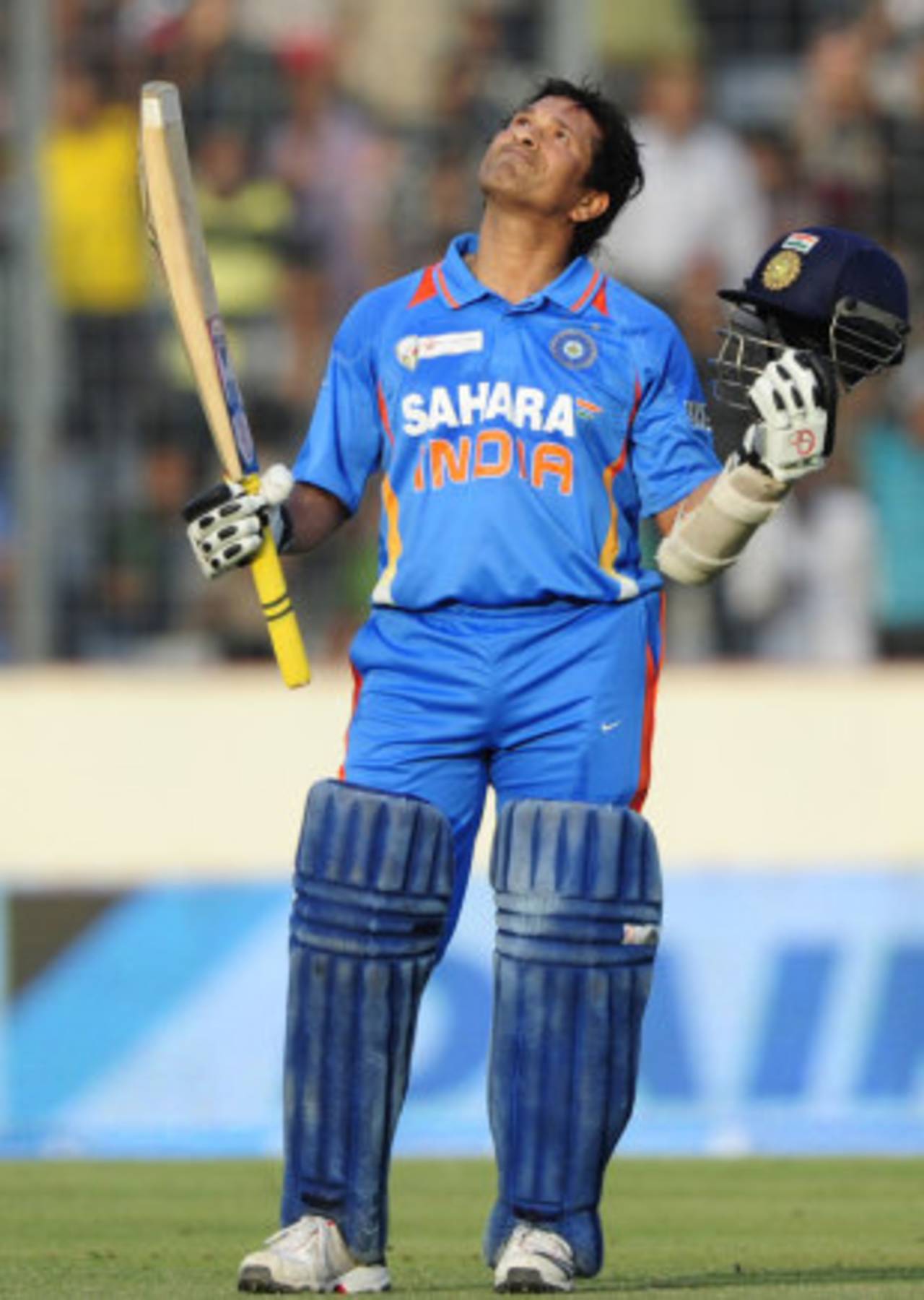How to understand cricket without needing a law degree
No more arguments over what the rules are really trying to say. Here are some complicated on-field scenarios rendered simple
Sidin Vadukut
17-May-2012

Any referrals involving Sachin Tendulkar will be decided by divine intervention, usually in the form of a lightning bolt striking down the one who questioned Him • AFP
I don't know what your thoughts are on this topic - and if you are a Twenty20 fan, you probably don't think at all, ha ha - but what in god's name does cricket have to do in order to get a break? It is as if the sport endlessly lurches from one controversy to the other without being able to sit back and enjoy a nice, long, fluent Ross Taylor innings.
Ever since the sport was invented by WG Grace all those years ago, it has been troubled by scandal: Bodyline, Australia, Ashes, Kerry Packer, Javed Miandad, Sharjah, match-fixing, India-Pakistan politics, aluminium bat, video replays, Harbhajan Singh, 21 runs off one ball, Arun Lal, racism, T20, switch-hit, and now, most recently, the interpretation of the official cricket rules for what construes as a catch on the boundary.
While it is not up to this columnist to say what he thinks of Test fanatics (boring, tiresome fossils who have been single for too long) or T20 aficionados (money-minded tax-evading heretics with no respect for tradition, who are also usually Manchester United fans), he can help you make sense of the increasingly ambiguous interpretations of cricketing rules. In order to help the common cricket fan all over the world in this time of legislative crisis, I have compiled a set of frequently asked questions about cricket. Each question analyses an extreme cricketing incident. I hope this will help average fans make sense of the sport.
All these interpretations are accurate and conform to the latest ICC rules at the time of going to press/server.
Scenario 1 The batsman thumps the ball to point, where Sourav Ganguly dives to take a spectacular catch. Overcome by emotion Ganguly awkwardly throws the ball up in the air. The ball hits the spider-cam, loops onto one of the wires holding up the camera, and miraculously rolls all along it before falling to the ground outside the boundary. Should the batsman be given out? If not, how many runs has he scored?
Answer The laws of cricket clearly state that a catch is complete only when the fielder is in complete control of the ball and his own movements. In this case it is clear that Ganguly did not have full control of the ball. Therefore, the batsman is awarded six runs, which is enough to win the tight match, and as per ICC rules, Ganguly is dropped from University Of Calcutta Alumni Association reserve team for the rest of the season.
Scenario 2 In the final of the 2023 ICC World Cup, Sachin Tendulkar switch-hits a Shahid Afridi delivery to the third-man boundary. Tendulkar celebrates but Afridi reminds the umpire that according to the ICC rules revised in 2012 a batsman has to commit to a left- or right-handed shot before the bowler has completed 35% of his run-up. Afridi is certain that the Little Veteran violated this norm. There is a fracas on the pitch before the umpires consult with the video official. The replays go in Sachin's favour. Which is when Pakistani coach Shahid Afridi, who had retired in the interim, reminds them that switch-hit decisions are not eligible for video referrals. What happens next?
Answer Andrew Symonds is banned from all forms of the sport.
Scenario 3 The batsman hits the ball high in the air towards the long-on boundary. Two fielders run under the ball. They hit each other and one tumbles over the line. The other fielder leaps up in the air and catches the ball before staggering backwards to the boundary, out of control. At this point the fielder outside the boundary pushes his unstable team-mate back into the field of play before he can fall over the line. Is the catch given? Also, what am I smoking?
Answer There is no reason whatsoever for confusion. The rules are very clear indeed. They state as follows:
A ball may be caught, subject to the provisions of Law 32, or fielded after it has crossed the boundary, provided that
(i) the first contact is by a fielder either with some part of his person grounded within the boundary, or whose final contact with the ground before touching the ball was within the boundary, but not both unless there is an intervening contact within or without the boundary that annuls any of the previous provisions pertaining to holders of a notarised Form 16 for any of the immediately previous three financial years. And,
(ii) Have you ever been denied a visa to Denmark before? And,
(iii) Coffee/Tea and Petit-fours £3.75
I sincerely hope that these illustrations help to demystify cricket for fans and restore some of the joie de vivre of this great sport.
Sidin Vadukut is the managing editor of Livemint.com and the author of the novel Dork: The Incredible Adventures of Robin 'Einstein' Varghese. He blogs at Domain Maximus.